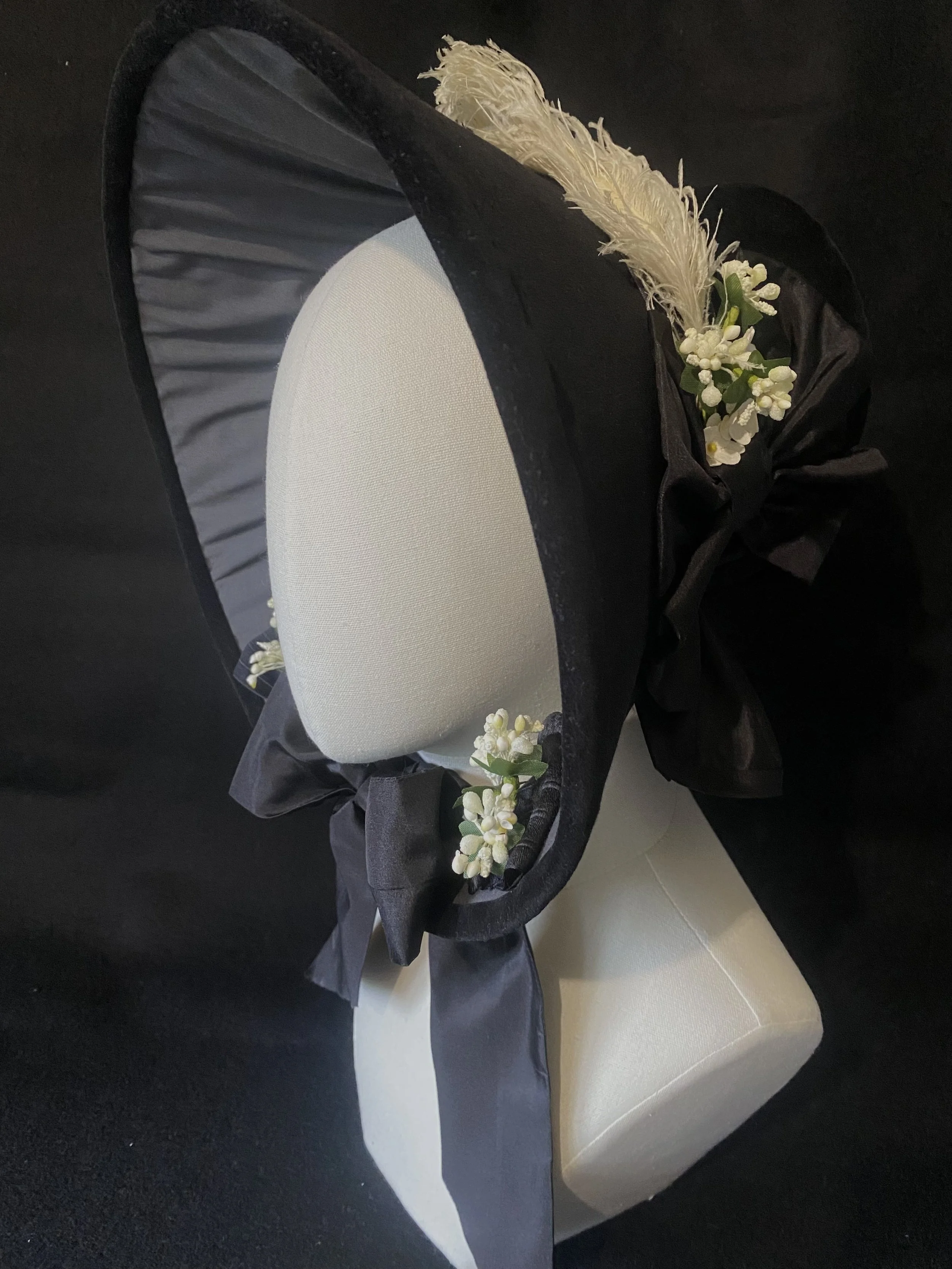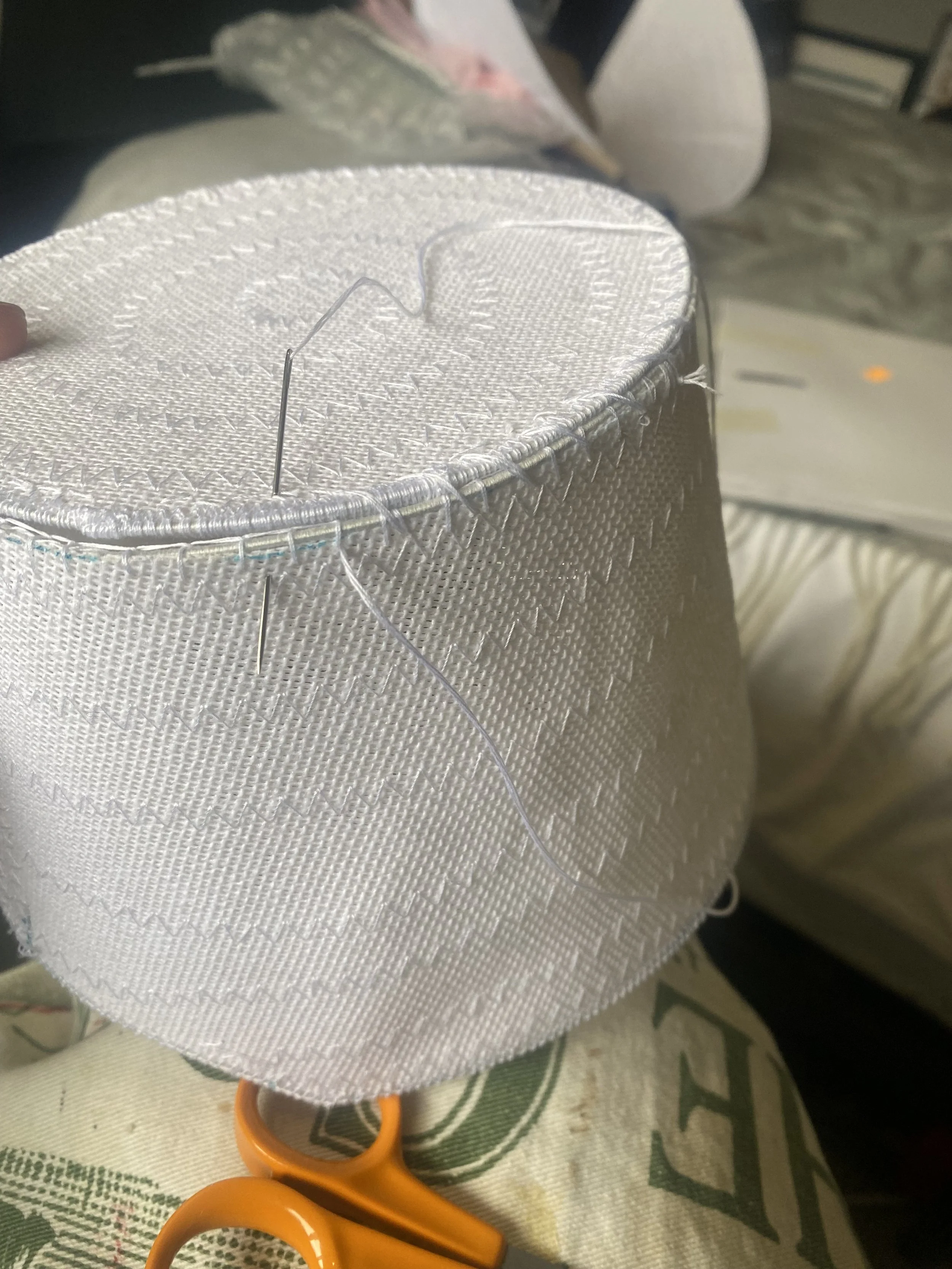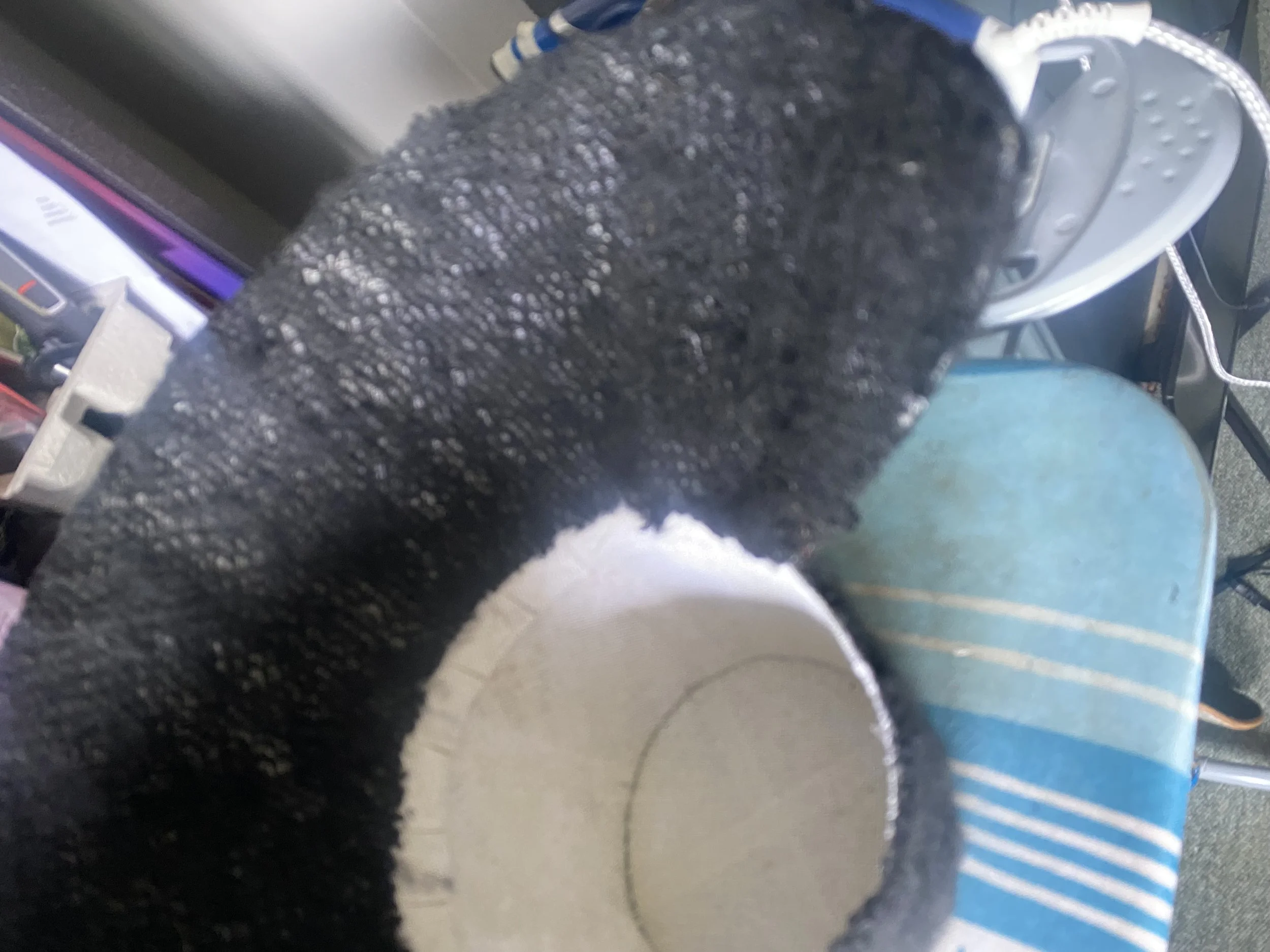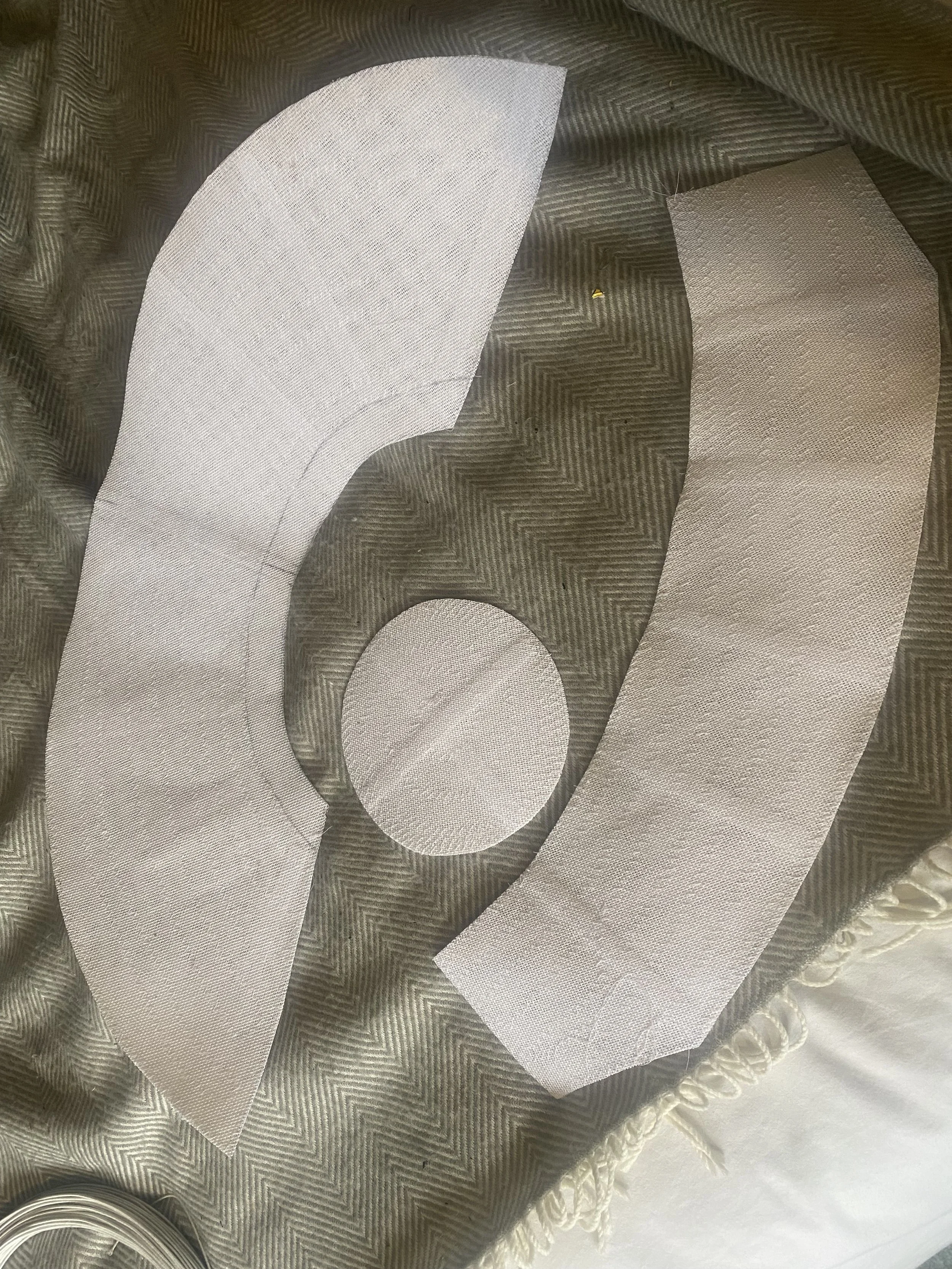Jane Bedden
Ladies Bonnet c1840-60
My Bonnet is based on a 1840-60 shape. I studied references including photos, original Bonnets of the time and fashion plates. Studying decoration from this period and incorporating trim designs and making them from modern and antique pieces.
The bonnet is constructed in the way generally used for stage. Using two layers of Buckram, Ridgelene and wire, theatrical hats are constructed in this way to be robust and are built to last on stage over a long period.
It is covered in cotton velvet and lined in cotton, trimmed using silk ribbon and some modern and antique flowers and ostrich feathers.
I teach a Bonnet Workshop at RADA and use this bonnet as a reference for students. I’m passionate about teaching my craft to others and hope I can ignite a love of hats by introducing and passing on my knowledge and advice.
Not for sale.
“The piece I am exhibiting is based on references of Bonnet shapes from 1840 - 60.
The trim is based on Bonnets of the time. The wide round brim typical of this period has flowers on the inside to frame the face.
A lot of theatrical millinery takes references from photos of original shapes, fabrics, colours, fashion plates and paintings.
We look at how things were constructed and try to find written descriptions of instructions, patterns and how hats were worn from that time period.
The way the Bonnet is constructed is based on traditional theatrical millinery, sturdy, robust and built to last.”
Materials and Techniques
The Bonnet is constructed using two layers of white Buckram with Ridgelene struts sandwiched in between the Buckram brim, all the pieces are then zig zagged together on a sewing machine. A bias strip of tarletan is stitched over the edges before stitching hard wire around the outside edges. The pieces are then over stitched together by hand using 4 thicknesses of thread. Once you have your shape it is stiffened with shellac varnish, this becomes very hard wearing. In the past they would have made the brim out of paste board, stiffened Cardboard.
Once dry the shape is covered in ice wool, a loose weave fabric easily manipulated, and glued in place. This gives the Bonnet an even finish when covered in fabric. The inside brim is covered using a lightweight cotton cut on the straight, pleated and stitched into place by hand.
The skirt is added to the back neck edge.
Feathers, ribbons and flowers are placed and stitched on and finished off with a lining.
Millinery Heritage
“I studied Millinery at Art School, taught by Shirley Hex. I have always loved history and costume and so combined these and took the path of Theatrical Millinery.
My first job after leaving college was in the Millinery Dept at Angels the Costumiers. They have an amazing collection of original antique hats and it was a fantastic opportunity to study how things were made up close. I was extremely lucky to also work alongside Jenny Adey for many years, working on so many west end shows and absorbing her knowledge along the way.
Heritage is a window into the past and how techniques and materials have change over time. Still using some of those techniques today we have to adapt to modern times and modern materials.
With theatrical millinery you have the opportunity to create past styles but with an updated approach to construction.
My Grandmother was a society dress maker making Gowns and Wedding Dresses for High Society of the time. She completed an 7 year apprenticeship from the age of 14, covering pattern cutting, millinery and bead work.
She continued to make dresses for family and friends for many years after. ”
about Jane Bedden
After studying Fashion Design, then Specialising in Millinery at Epsom School of Art Jane went onto to work at Angels and Bermans in the Millinery Dept working on many Films and TV shows.She went on to work for ENO alongside Costume Designers Jasper Conran and Maria Bjornson.
After having a family Jane worked alongside Jenny Adey. Working a many west end shows including Wicked, Jerry Springer The Opera and Phantom.
Over the years she has worked as a freelancer on TV shows, including Bridgerton, The Great, Mr. Selfridge and films inc Wicked, Snow White and Hamnet.
Jane has also worked for organisations such as Welsh and Scottish opera, The Young Vic and Bath Museum of Fashion.
She has worked for RBO for over 15 yrs as a freelancer on productions inc Alice in Wonderland, Swan Lake and La Boheme.
Jane now teaches her skills and knowledge at university level making Bonnets and covered Tricorns. She is passionate about sharing her experiences and hopes to inspire the next generation of Milliners.






